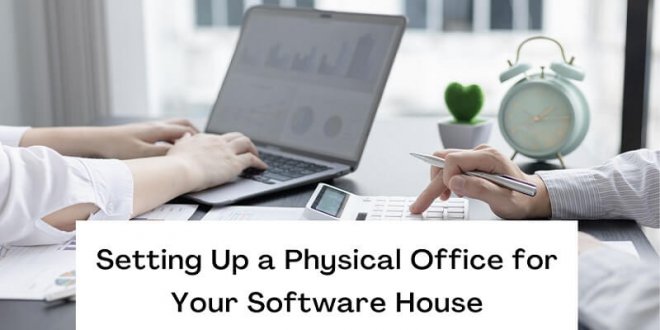Setting up a physical office for a software house seems stressful, yet it provides several benefits for your business. The entire team will be on the same page as face-to-face communication and physical interaction resolve conflicts and improve team performance. Moreover, it will allow you to meet with your clients and understand their requirements effectively.
Software development has transformed the digital world, so much so that the market is expected to grow by around 12% in the next few years. With such a positive outlook of the industry, more businesses are tapping the opportunity of setting up a physical office because businesses are constantly investing in software development to create powerful apps and software products for users.
Besides, software solutions like SD-WAN are making management and operations much easier. Modern networking technology can help you in connecting multiple data centers. Thus improving efficiency, enhancing security, and reducing costs.
So, let’s delve into some significant things that you need to consider when setting up a physical office for your software house. Many factors come into play, such as the type of equipment, where you want to set up the office, and how it will be cost-effective and comfortable.
Setting Up a Physical Office for Your Software House:
1. Plan It Out:
It all begins with effective planning, so the first step is to determine your business requirements and the tasks your team will be performing within the office. This will provide you with a broader perspective on how to begin setting up a physical office. You can determine requirements through the following:
- Your budget
- Key business activities
- IT equipment
- Location
You need to develop a comprehensive and robust plan for your new office. Therefore, it is recommended to perform market research and analyze your requirements. Once you are aware of your needs, find a suitable location and put things in place.
Often, appointing one key person to be the point of contact during setting up is a great idea. This allows effective communication between the team, and everything remains hassle-free.
2. Office Equipment:
A new start means time to purchase equipment for your office. You might have existing IT infrastructure if your team has been working remotely, then you can keep the existing equipment while adding new things where necessary. Therefore, in this phase, you will be considering what type of IT equipment you will need based on your requirements. Moreover, servers and workstations will be installed in the office as well.
When choosing a supplier for the equipment, make sure they have a solid track record and a good market reputation. For this reason, we suggest you ask for references before making the decision.
Setting up a physical office is not just confined to office equipment but includes other tools, office furniture, and vehicles. Due to budget constraints, make a list of office equipment and prioritize it. This way, you will get the most important things needed for the setup. Also, keep in mind practicality and the comfort of your team.
The basics for your office will include the following:
- Powerful IT equipment, including computers, laptops, and tabs
- Spacious and durable workstations
- High-quality and comfortable chairs
- Internet
- Desks
- Shelves
- File cabinets
3. Designing Your Office:
The design of your office will represent your business, so it should be according to your business goals. For a software house, a modern-looking, efficient, yet comfortable office outlook should be considered. This is mainly because the development teams will be spending hours in front of their computers, so comfortable equipment and an interactive environment will improve their performance.
Focus on the details and sketch the design to better understand office equipment and furniture placement. Moreover, you can consult with a professional team to set up your software house office.
4. Consider Security and Insurance:
Investing in IT equipment will help you in maximizing the benefits, yet this investment is expensive. Therefore, it is essential to protect your equipment to prevent damage. This means making sure that everything is carefully delivered and installed in the office space. Also, make sure that the supplier has appropriate insurance; your office space and expensive equipment should be insured.
5. Don’t Settle for the Cheap Option:
When choosing IT equipment, never settle for cheap solutions. Every penny you will invest in technology will be worth it in the end. Plan wisely and choose quality products that support modern technology.
In a nutshell
Setting up a physical office for a software house is challenging, but with a little effort, you can transform any space into a high-functioning workspace. So, plan and prioritize to make your office space stand out.
 free html design Free html design templates
free html design Free html design templates





